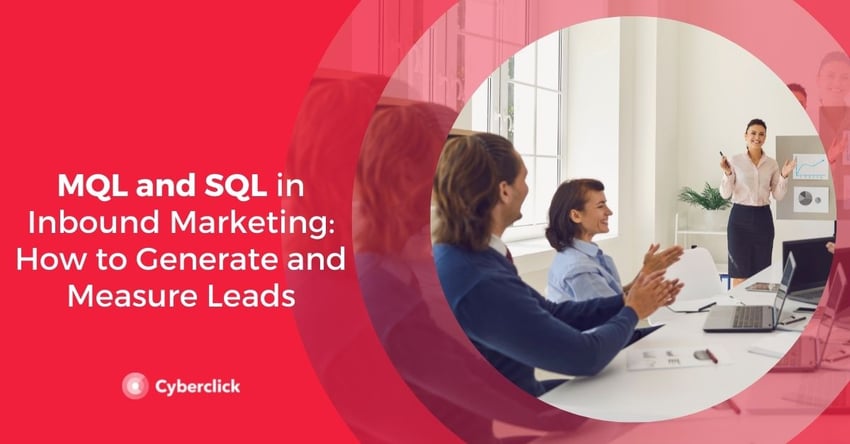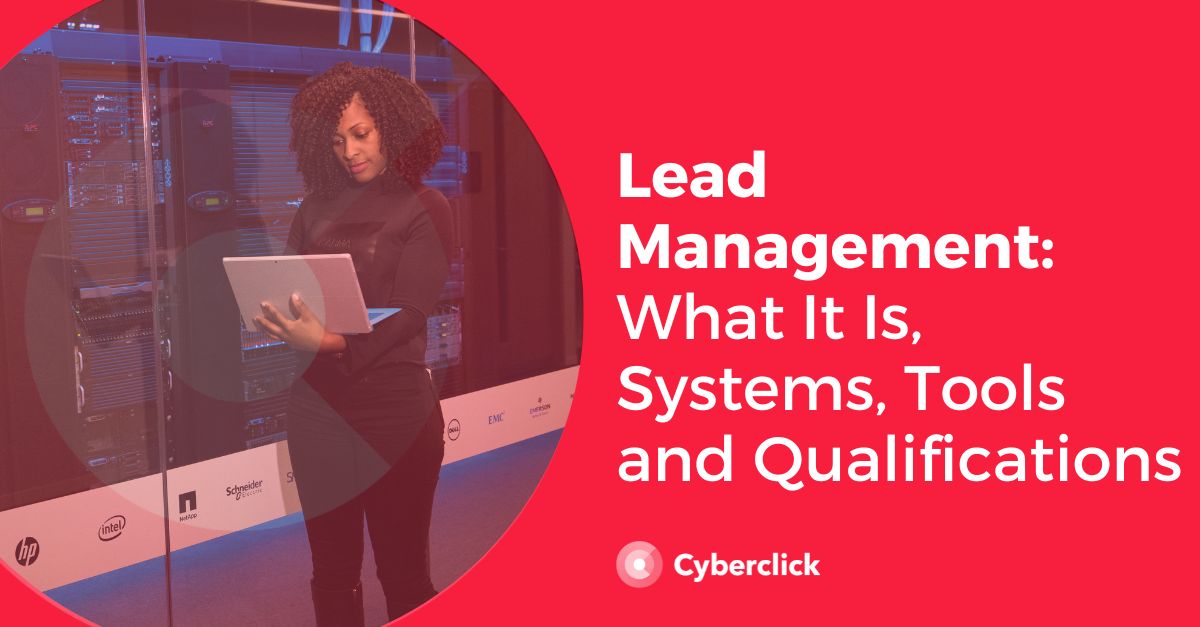Lead generation is a fundamental pillar of inbound marketing. But as marketers know, not all leads are the same.
There is a big gap between the moment a user leaves you their data for the first time and the point at which they are ready to buy. For lead generation to work, you must know how to correctly identify the two fundamental stages: the marketing qualified lead (MQL) and the sales qualified lead (SQL). Here's how to do it.

What Are MQLs and SQLs?
On the path from lead generation to final conversion, each user goes through different stages. The terms MQL and SQL refer to two key moments in this process.
Marketing Qualified Lead (MQL)
The marketing qualified lead, or MQL, is a person who has come into contact with your brand, shown some kind of interest in it, and has left you their data.
The MQL is at an intermediate stage of the conversion process. they are interested in the solution you offer but are not yet ready to buy.
Therefore, the right way to manage these leads is to pass them to the marketing team, who will start sending them messages with the aim of bringing them closer to conversion.
Sales Qualified Lead (SQL)
The sales qualified lead, or SQL, is a potential customer that is at a more advanced stage of the conversion process and is ready to buy. Here are some characteristics that can help you define a SQL:
-
They have the budget and the means to pay
- They fit the profile of your buyer persona
- Their actions indicate that they are close to making a decision
- They have shown a real interest in buying.
When you identify a SQL, the standard procedure is to pass the contact to the sales team to close the conversion.
Other Types of Leads
Depending on the characteristics of your brand and sales processes, there are other lead classifications that can be useful, such as these two defined by HubSpot.
-
Product Qualified Lead (PQL): PQLs are contacts who have used a product or service through a free trial and have taken actions that indicate they want to become customers. It can also apply to leads who have used the free version of a product and expressed interest in switching to the paid version.
-
Service Qualified Lead (SQL): SQLs are existing customers who have indicated that they want to purchase a more comprehensive plan of your products or services.
How to Classify MQLs and SQLs in Inbound Marketing
Now we come to the million-dollar question: how can you clearly identify MQLs and SQLs and take actions that will increase your conversion rate? The answer lies in an inbound marketing technique known as lead scoring.
Lead scoring is a process that consists of assigning a numerical value to each contact in your lead generation database.
The score of each lead depends on many factors, such as the information they provided in a form or their interactions with your brand on different channels. Leads that pass a certain score will be considered MQLs and those that reach the next target will be SQLs. Normally, this whole process is automated, so leads are passed to the marketing or sales database when they reach the desired score.
Each brand must define its own lead scoring algorithm based on different factors. Broadly speaking, there are two main types of lead scoring.
-
Unidimensional lead scoring: Each lead is assigned a single score, usually from 0 to 100. This type of lead scoring can be retrospective (based on the data they have provided and the actions they have taken) or prospective (based on an analysis of their behavior that determines the probability of them performing the action you are looking for).
-
Multidimensional lead scoring: In this case, we do not assign a single score to each lead, but work with several different variables at the same time. For example, we can independently assess how much a user corresponds to our buyer persona, what their level of brand awareness is and at what stage of the buying process they are at. This type of lead scoring is more complex to execute, but it allows us to be more precise and personalize interactions more.
Factors to Take Into Account in Lead Scoring
To develop your own lead scoring algorithm, choose a series of parameters and assign them a score based on a user's responses or behaviors. These are the most common factors to take into account.
-
Demographic information: This data will help you assess whether or not a lead fits your buyer persona. It is usually obtained through a user's answers to your lead generation form. This factor is usually very important for brands that target a very specific audience. For example, people who have just bought a house or inhabitants of large cities.
Information about the company: this section is relevant for B2B brands that need to know data such as the size of the company and the lead's position within it. As in the previous case, this information is usually collected through a form.
Online behavior of the lead: here you can assess the user's interactions with your website and other brand channels, such as social networks. One way of approaching this is based analyzing the behavior of users who eventually become customers. Pay attention to what pages they visit, what content they download, what social networks they follow the brand on, etc.
Response to emails: once you have incorporated the lead into your database, the most common thing is to start sending email marketing messages. The lead's actions (opens clicks, etc.) will help you asses their interest and will provide information that can aid in your lead scoring strategy.
How to Move From MQL to SQL: Lead Nurturing
In inbound marketing, lead nurturing is the process of preparing and accompanying leads throughout the buying cycle. Lead nurturing strategies move the user closer and closer to conversion, from MQL to SQL and finally to becoming a customer.
Normally, lead nurturing translates into a series of communications that firstly include content that adds value and then offers that may be of interest to the person in question.
These are the steps to follow within a lead nurturing strategy.
- Analyze the buying process. Brands have very different decision and purchase cycles, from the soft drink that you buy impulsively in a store to enterprise software that takes months to make a decision on. Therefore, the first thing you need to do is clearly map the process by which a lead becomes a customer and identify the milestones that make that lead go from visitor to MQL, from MQL to SQL, and from SQL to customer.
- Define lead nurturing objectives. Normally, you should seek to achieve a series of "milestones" that indicate that a lead is ready for the next stage, such as downloading certain content or requesting a free trial of a service.
- Design the communications sequence. The lead nurturing process consists of a series of impacts from the brand to the user through a pre-designed sequence of communications. This process can include different channels, for example, email marketing, mobile marketing, and SMS. You can define different sequences for different user segments.
- Automate the process of sending messages. In this step, you should use a lead nurturing tool (at the end of this article you will find some) to program the sequence of messages and have them sent to each lead automatically.
- Execute, measure, repeat. After implementing your lead nurturing strategy, you will have to establish periodic controls to see how users are responding and optimize as necessary.
Finally, here are three lead generation tools that can help you move a lead from MQL to SQL.
- Mailchimp. This popular email marketing tool allows you to create automated email sequences and measure in detail the results of each message.
- Adobe Marketing Cloud. This platform combines content management, marketing campaign execution, personalization, and B2B marketing solutions, making it a complete solution for inbound marketers.
- HubSpot. HubSpot is the north star inbound marketing solution, as it has all kinds of tools to automate campaigns, centralize all actions, and optimize resources.
Responsable de la estrategia de contenidos y visibilidad en Cyberclick, con enfoque Allbound y especialización en posicionamiento SEO, GEO y automatización con IA. Gestión avanzada del CRM con HubSpot: base de datos, workflows, lead nurturing, scoring y reporting. Experiencia en marketing digital, comunicación corporativa y periodismo, uniendo estrategia, creatividad y tecnología para captar y convertir leads cualificados.
Responsible for content and brand visibility strategy at Cyberclick, with an Allbound approach and specialization in SEO, GEO (Generative Engine Optimization), and AI-powered automation. Advanced HubSpot CRM management: database segmentation, workflows, lead nurturing, scoring, and reporting. Background in digital marketing, corporate communications, and journalism—combining strategy, creativity, and technology to attract and convert qualified leads.





Leave your comment and join the conversation